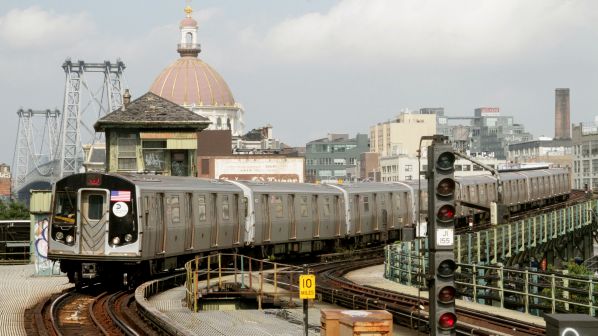MTA plans to invest more than $US 40bn in New York City Transit’s subways and buses as well as major investment in the Long Island Railroad and Metro-North commuter rail networks.
“This proposed 2020-2024 Capital Program - the most ambitious capital plan in the agency’s history - builds on the success of the Subway Action Plan, and with new tools such as design-build and the reorganisation that is underway we’re certain we can deliver for our customers,” says Mr Patrick Foye, MTA’s chairman and CEO. “This plan expands service, increases reliability, speeds up the system, and delivers the world’s largest ever investment in accessibility, for both NYC Transit and the MTA’s commuter railroads, and at the end of this five-year period, New Yorkers will see a revitalised and modern system for the 21st century and beyond.”
MTA says the single largest source of funds for the plan - $US 25bn - will come from bonds backed by new revenue streams authorised in this year’s state budget, including $US 15bn from central business district tolling that was passed by the legislature and signed into law in April by New York state’s governor Mr Andrew Cuomo as part of the state’s 2020 fiscal year budget.
MTA expects to receive $US 10.68bn from federal funding programmes, while another $US 10bn will come from bonds backed by newly established revenue sources dedicated to public transport. The state has pledged $US 3bn, and the City of New York has been asked to pledge an equal amount. The remaining $US 9.8bn will come from the MTA in the form of pay-as-you-go capital contributions and bonds backed by long-standing dedicated taxes, fares and revenues from existing road tolls.
New York City Transit (NYCT)
An investment of $US 37.3bn is proposed in the New York City subway including:
Second Avenue Subway Phase 2: $US 4.5bn to complete the project, with funding split approximately 50:50 between the federal government and MTA resources. The project includes three new stations serving 300,000 daily riders and a new connection with Metro-North Railroad.
Major items of expenditure include:
Signalling including CBTC: $US 7.1bn to provide more frequent and reliable services on six subway lines, including the Lexington Avenue Line, serving more than 50% of passengers
Trains: $US 6.1bn for 1900 new subway cars, as well refurbishing existing trains to improve mechanical reliability to mitigate up to 10% of delays.
Station accessibility: $US 5.2bn to make 70 stations accessible in accordance with the Americans with Disabilities Act so that no passenger will be no more than two stations away from an accessible station
Station improvements: $US 4.1bn to conduct critical repairs at about 175 stations, including replacement of 78 elevators and 65 escalators, and
Track: $US 2.6bn to replace 97km of track and install 32km of continuous welded rail.
“These proposed investments in our subways and buses have delivered beyond my wildest expectations,” says NYCT’s president Mr Andy Byford. “The system has been stabilised and this capital plan offers us an extraordinary opportunity to now modernise it and provide world-class transit options to New Yorkers in an unprecedented time frame.”
Long Island Rail Road
$US 5.7bn will be invested to enable an historic transformation of the LIRR by the planned December 2022 opening of East Side Access to allow more than 160,000 daily passengers to travel to Grand Central Terminal, saving commuters up to 40 minutes per day. The associated Main Line Expansion scheme will add a 16km third track on the Main Line corridor, used by 40% of LIRR commuters. These projects, along with capacity improvements at Jamaica, will enable a 60% increase in reverse commute and a 50% increase in peak service between Manhattan and Long Island.
Other investment priorities include $US 1bn for track upgrading and $US 487m to purchase 160 new M9A EMU cars to expand the electric fleet by 13% plus nearly 20 coaches and more than 10 locomotives for non-electrified lines.
Metro-North Railroad
$US 4.7bn will be invested in New York State to advance New Haven Line access to New York Penn station via four new stations in the Bronx, begin reconstruction of the Grand Central Terminal train shed and Park Avenue tunnel and viaduct, start the replacement of Metro-North’s fleet of M3 EMU cars, improve stations, and prepare for capacity improvements on the Harlem Line and Port Jervis Line.
“Under this plan we will begin the replacement of the Park Avenue Viaduct, one of the most significant construction projects in the history of the MTA Metro-North Railroad, explains the railway’s president Ms Catherine Rinaldi. “It also includes additional funding for the Penn Access project, which will enhance our network by creating a Metro-North connection between the East Bronx and Penn station.”

